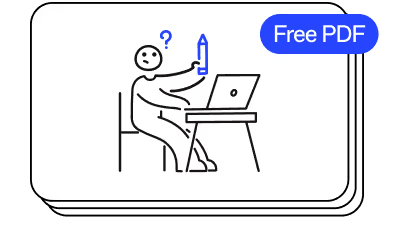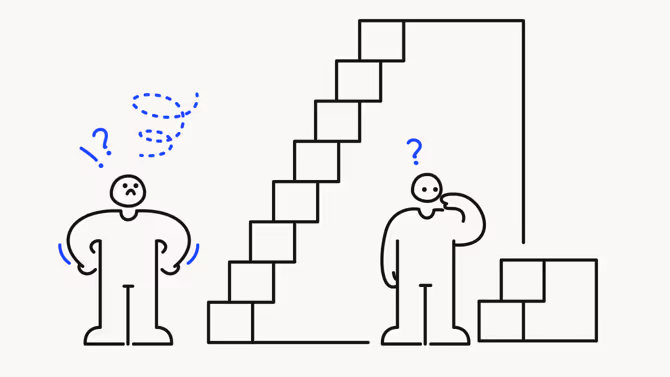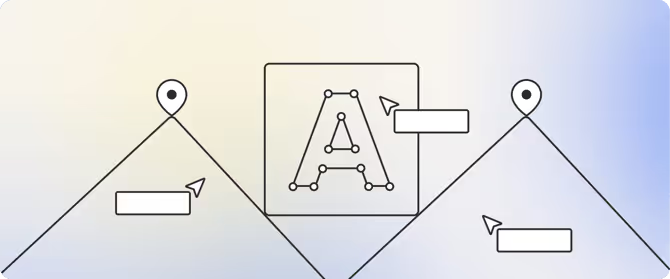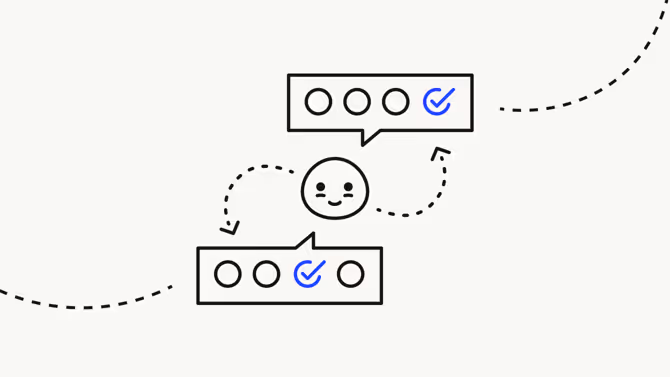How to identify and address skills gaps in the workplace

Addressing poor performance template

Here’s one workplace truth many organizations are learning the hard way: yesterday’s skills don’t guarantee tomorrow’s success. As technology evolves and market demands shift, many workforces are struggling to keep up.
The disconnect is more than a talent issue. It’s a business risk. AI is expected to automate as much as a quarter of all tasks by 2027. That shift could unlock growth, but only if companies invest in reskilling now.
The first step? Knowing where skills gaps begin and how to stop them from holding your workforce back.
What are skills gaps?
A skills gap is the disconnect between the skills employers need and the ones employees already have. It’s a growing challenge, one that limits productivity, slows innovation, and makes it harder for organizations to adapt. When critical skill sets are missing, it’s hard for teams to think strategically or meet evolving demands.
People often talk about “the skills gap” like it’s a single problem. But most organizations are juggling several at once, each with different root causes:
- Lack of tech training: As tools and platforms evolve, employees are often left without the technical skills to use them effectively.
- Loss of institutional knowledge: Experienced employees are retiring or changing roles, and their critical expertise doesn’t always get passed on before they go.
- Limited soft-skills development: Skills like critical thinking, leadership, and collaboration are harder to teach, and many companies don’t invest in them enough.
- Changing industry standards: Adapting to evolving regulations, technologies, and customer expectations demands continual upskilling and reskilling.
To close the gaps, you need the visibility offered by a skills gap analysis. This structured approach helps organizations assess whether their current workforce is equipped to meet their goals.
A good analysis starts with identifying your organization’s objectives and the outcomes you’re aiming to achieve. From there, determine what skill sets are required to support those outcomes and which roles are directly responsible for delivering them. This includes understanding whether compensation challenges are preventing you from attracting or retaining the skilled talent needed to achieve these outcomes.
Next, take stock of the skills your employees already bring to the table. Pair your skills inventory with an employee engagement survey so you can validate where capability shortfalls are affecting motivation, confidence, and day-to-day performance. This might involve surveys, assessments, or even one-on-one manager feedback. Finally, compare your current capabilities with what’s required, then use that insight to prioritize upskilling, reskilling, or targeted training and development.
Done right, a skills gap analysis reveals not just where you’re falling short but also where you have untapped potential.
6 types of skills gaps and how to overcome them
You might assume technical skills are the biggest missing link. But the most common challenges in the modern workplace come from gaps in both technical and soft skills.
Soft skills are interpersonal or behavioral abilities that shape how people work together, like communication, critical thinking, or adaptability. Hard skills are job-specific, teachable abilities like data analysis, coding, or project management. In other words, skills that typically relate to a particular function or field.
Let’s look at the most common skills gaps employers face and how to address them strategically by asking:
- What’s the gap?
- Why’s it happening?
- How can you close it?
1. Struggling with project management
What’s the gap?
Teams struggle to deliver projects on time, on budget, or with clear accountability.
Why’s it happening?
As cross-functional work increases, more roles require project coordination, even if it’s not in the job title.
How to close it
Offer training in foundational project management tools and methodologies like Agile or Kanban. Encourage certifications for roles that regularly lead initiatives, and create clear frameworks for ownership and decision-making.
2. Lack of innovation and creative problem-solving
What’s the gap?
Employees lack the confidence or space to generate new ideas or approaches.
Why’s it happening?
Innovation often suffers under pressure to deliver quickly, especially when teams lack psychological safety or exposure to diverse thinking.
How to close it
Build environments that reward experimentation and creative risk-taking. Include creativity modules in training and development programs.
3. Low confidence in negotiation and influence
What’s the gap?
Employees struggle to persuade stakeholders, manage conflict, or navigate high-stakes conversations.
Why’s it happening?
Negotiation and influence often fall outside formal training and aren’t typically reinforced through day-to-day work.
How to close it
Introduce structured skill-building for key roles (like sales, procurement, or leadership) that includes scenario-based practice and real-time feedback.
4. Collaboration breakdowns between teams
What’s the gap?
Silos form, miscommunications rise, and team productivity suffers.
Why’s it happening?
Hybrid work, rapid growth, or unclear role boundaries tend to strain collaboration.
How to close it
Focus on soft skills like emotional intelligence, active listening, and shared accountability. Reinforce these skills in onboarding, feedback, and performance processes.
5. Resistance to new ways of working
What’s the gap?
Employees resist change or struggle to adjust to new processes, tools, or roles.
Why’s it happening?
Change is accelerating, but change readiness often isn’t prioritized in employee development.
How to close it
Build adaptability into your company culture. Offer ongoing reskilling and upskilling opportunities, and empower managers to model a learning mindset.
6. Low AI fluency and tech adaptability
What’s the gap?
Employees struggle to understand or effectively use AI tools and emerging technologies in their daily work.
Why’s it happening?
Technology is evolving faster than most upskilling efforts can keep up with. While technical training helps, the real blocker is often a lack of confidence or adaptability, not just a missing skill set.
How to close it
For a broader, practical roadmap HR teams can use to operationalize AI across people workflows - not just upskilling - see our AI in HR examples via our toolkit for smb people leaders.
Instead of making AI feel intimidating or optional, embed it into daily workflows. For HR teams enabling adoption, our AI Prompting Guide for HR teams includes practical prompts to build AI fluency through onboarding, manager coaching, and day-to-day workflow use cases. Prioritize soft skills like adaptability, digital curiosity, and continuous learning. Workleap, for example, uses AI to simplify people management, like turning feedback into instant coaching tips or performance signals into clear action. When people experience small wins with AI, momentum builds.
The role of continuous learning and microlearning in preventing future skills gaps
In a workplace defined by constant change, learning can’t be a one-time event. What sets high-performing teams apart is their ability to grow and adapt instead of relying on a fixed skill set. For organizations that want to future-proof their workforce, continuous learning is now a strategic necessity.
This shift means rethinking how you approach training and development. In place of long, infrequent sessions, many companies are turning to microlearning: short, focused bursts of content that fit into the flow of work. Whether it’s a quick tutorial on a new tool or a refresher on feedback best practices, microlearning helps reinforce behaviors and build new employee skills without disrupting productivity.
Over time, this approach fuels more than skill-building. It supports upskilling, nurtures adaptability, and encourages a culture of curiosity. Employees feel more prepared and engaged, and organizations gain a workforce that’s mobile, responsive, and aligned with future needs.
How to identify skills gaps with AI
IIdentifying which skills to develop starts with pinpointing the biggest gaps in your workforce. AI makes this process easier by mapping employee capabilities, uncovering hidden strengths, and highlighting areas for growth.
These insights help HR teams and managers create focused development plans that align with business goals and employee aspirations.
Workleap Performance brings it all together by tracking progress, linking development efforts to engagement and outcomes, and using 360-degree feedback to turn skill data into action. With visibility into both performance and growth, HR can move from reacting to gaps to proactively closing them.
Close your skills gaps faster with Workleap
Addressing skills gaps is critical to building a resilient, forward-moving workforce. But quick fixes aren’t enough. To inspire real change, you need an infrastructure that helps you identify needs and track real progress over time.
Workleap Performance turns skills gaps into growth opportunities. Built-in feedback loops, smart review cycles, and real-time insights give managers clear visibility into where development is needed. With the right structure in place, performance conversations become moments of momentum instead of missed opportunities. If your goal is to turn gaps into growth plans, this is how to conduct a performance review in a way that’s structured, actionable, and supportive.
Try Workleap for free today to start future-proofing your workforce.
FAQs
What are the potential risks of not addressing skills gaps quickly?
When skills gaps go unaddressed, the consequences add up fast. Organizations risk lost productivity, inflated labor costs, and declining market share. In some cases, gaps in areas like cybersecurity or data privacy can even lead to compliance issues and reputational damage.
Which industries are most affected by skills gaps?
The short answer? All of them. While sectors like tech, finance, and manufacturing may feel the impact more immediately, root causes like rapid innovation and workforce retirement affect organizations of every size and industry. No team is immune to change, which makes workforce readiness a universal priority.
How do continuous learning and microlearning help prevent future skill gaps?
Forward-thinking companies invest in continuous learning to stay ahead of change. When built around specific role needs and skills data, these programs keep development aligned with business goals. Microlearning platforms take it a step further by delivering personalized, just-in-time training that fits into the flow of work. They make it easier to upskill employees consistently without disrupting productivity.
%20(1).png)

%20(1).avif)


.avif)
.avif)








